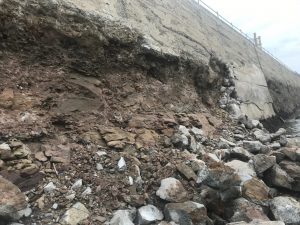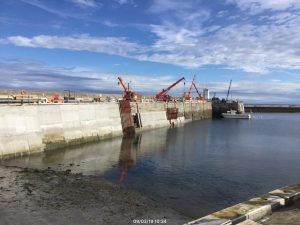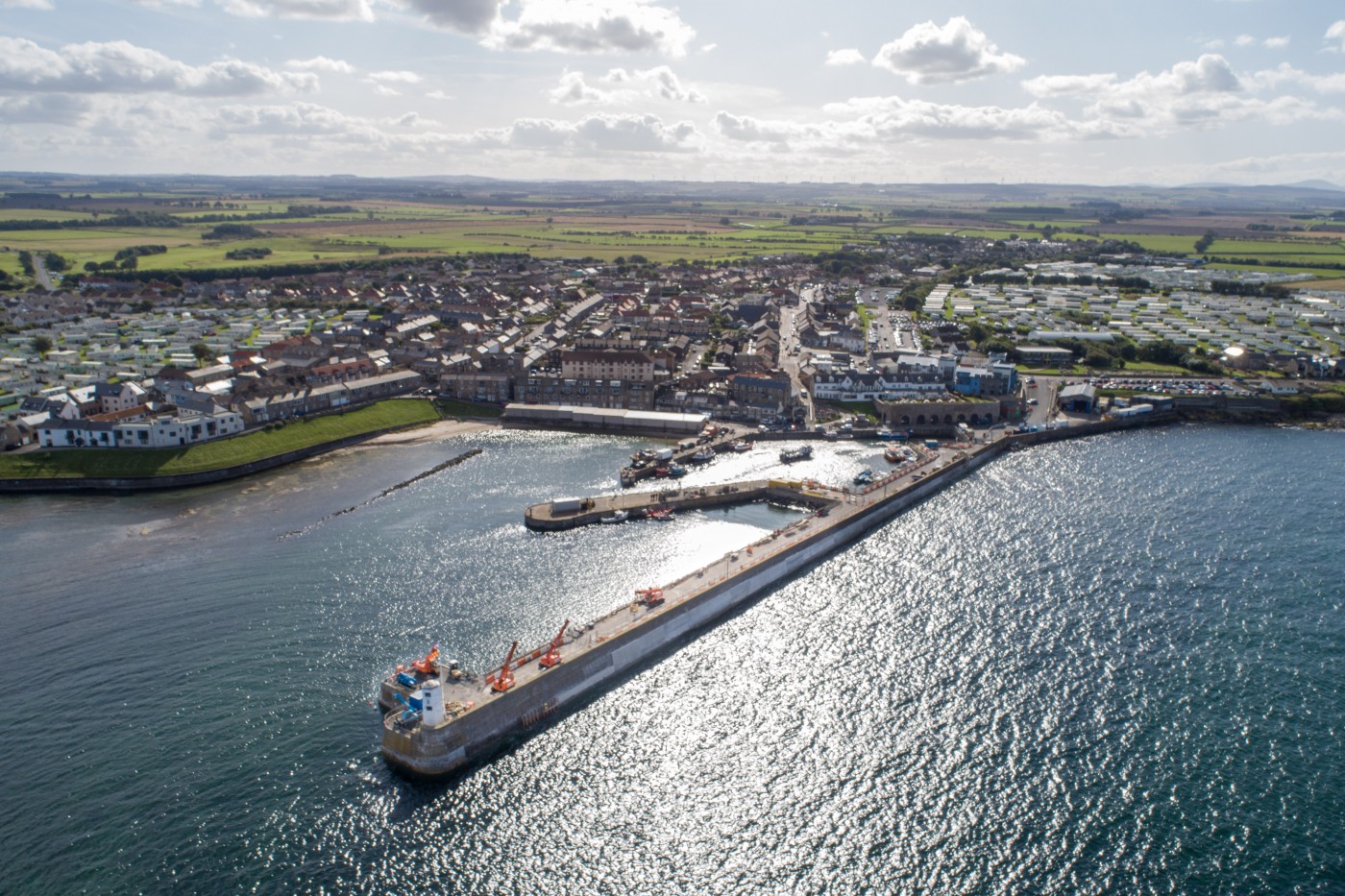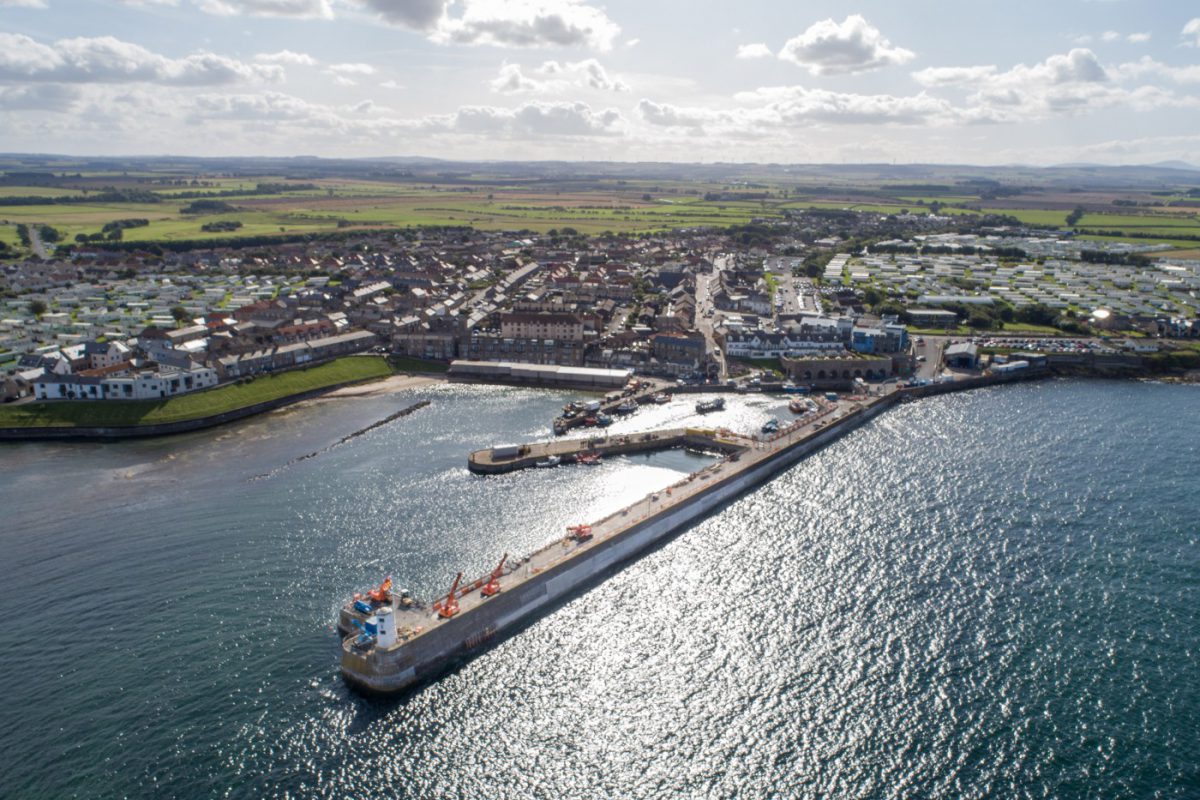The harbour at Seahouses comprises the Main Pier and an Outer Breakwater. Assessments of the condition of the Main Pier revealed extensive deterioration, large holes and cracks within the structure and identified deterioration at an increasing rate.
Seahouses Main Pier, the harbour and the adjacent coastline are valuable tourism assets and are of recreational and social importance to the local community. The harbour is the sole departure point for pleasure-boat trips to the Farne Islands National Nature Reserve (NNR), attracting 150,000 visitors annually, with access required throughout the construction period. The harbour is also a base for commercial fishing.
The pier is adjacent to designated nature conservation sites, including a Special Area of Conservation (SAC), Special Protection Area (SPA), Ramsar site, Site of Special Scientific Interest (SSSI), and Area of Outstanding Natural Beauty (AONB).
With only an estimated 10-15-years of remaining effective life, the £3m restoration of Seahouses Main Pier has repaired defects and encased the whole pier with concrete, ensuring its good structural condition for another 100-years.

The completed restoration protects 165 properties (26 businesses and 139 homes) from coastal erosion and sea flooding risk. The scheme also sustains the harbour and so prevents loss to the local economy by safeguarding jobs and income associated with the fishing and tourist industries operating from the harbour. The works also prevent the need to relocate the RNLI lifeboat station because it can now remain operational in its present position.
The scheme was led by Northumberland County Council (NCC) and funded by the Environment Agency. The Designer, Royal HaskoningDHV (RHDHV), ensured the environmental acceptability of the works within a highly sensitive marine environment hosting numerous national, European and international nature conservation designations, through early and continuous dialogue with the regulators such as Natural England, the Environment Agency and the Marine Management Organisation. The Designer and the Contractor, Balfour Beatty, worked jointly to offer efficiencies through value engineering to reduce overall scheme costs to affordable levels.

The team approach also ensured that safe and buildable solutions were developed, and safeguarded the highly-valued marine environment during the works, with 99% of waste generated being diverted from landfill.
Innovative techniques, such as hydro-demolition as an underwater construction method for breaking out a toe trench at the foot of the pier, were used to help accelerate programme and ensure that substantial completion occurred within a tight construction programme, needing completion before the arrival of over-wintering birds.
With access to the nationally significant wildlife haven of the Farne Islands only available by boat from Seahouses, some 150,000 visitors were safely marshalled through the operational site to tour boats by the Contractor.
The work has been shared within the industry by hosting site visits from the Regional Flood and Coastal Committee and there are plans to submit a written paper to the ICE covering the scheme. The underwater hydro-demolition techniques have been the subject of research interest for underwater noise assessments and the technology will be transferred to similar projects in the future.

Key Achievements
Safely marshalled over 150,000 visitors through the site works area to pleasure boat trips to the Farne Islands
Environmentally sensitive design and construction methods for works within a highly designated marine environment
Value engineering and use of innovative construction techniques to reduce overall scheme costs to affordable levels and achieve completion within a tight construction programme


